Subtotal: £35.80
Flower Horn Young Pellets – Omega-3/6 & Astaxanthin Floating Pellets, Floating Fish Food Enriched with Astaxanthin, Ideal for Promoting Stunning Colors in Flower Horn Fish
£11.00
Welcome these beautiful Flower Horn fish into your aquarium with our Omega-3/6 & Astaxanthin Floating Pellets. This premium fish food enhances vibrant colors and supports their health, making it ideal for aquarists seeking the best dry food for their aquatic companions.
Species Introduction
The Flower Horn fish, scientifically known as Cichlasoma synspilus, is a captivating species that has gained immense popularity in the aquarium hobby. Native to the freshwater lakes and rivers of Central America, particularly in regions such as Nicaragua and Costa Rica, these stunning fish are renowned for their vibrant colors, unique body shape, and the pronounced nuchal hump that develops as they mature. This species is not just a feast for the eyes; it also has a fascinating behavior that makes it a joy to observe in an aquarium setting. Flower Horns are known for their territorial nature and can exhibit a range of personalities, from shy to assertive, depending on their environment and social interactions. With proper care and attention, these fish can thrive and become a centerpiece in any aquarium, showcasing their beautiful colors and unique characteristics.
Care Requirements Dashboard
Essential Care Guide for Your Flower Horn Young Pellets
| Optimal Living Conditions | |
|---|---|
| Water Temperature | 24-27°C (75-81°F) |
| pH Level | 6.5-7.5 |
| Water Hardness | 4-12 dKH |
| Minimum Tank Size | 80L (20 gal) |
| Salinity | Freshwater |
| Care Level | Beginner Friendly |
✓ Care level: Moderate
Tank Size: Minimum 75 gallons
Water Parameters: pH 6.5-7.5, Temperature 78-82°F, Hardness 5-15 dGH
To ensure the well-being of your Flower Horn fish, it is essential to provide them with an adequately sized tank, as they can grow quite large, often reaching lengths of up to 12 inches. A minimum tank size of 75 gallons is recommended to accommodate their size and territorial nature. The water parameters must be closely monitored; maintaining a pH level between 6.5 and 7.5 is crucial for their health, as is keeping the water temperature within the range of 78 to 82 degrees Fahrenheit. Additionally, a hardness level of 5 to 15 dGH will help replicate their natural habitat, promoting optimal health and coloration.
Natural Behavior & Temperament
Flower Horn fish are known for their dynamic and often assertive behavior. In their natural habitat, they are territorial and can exhibit aggressive tendencies, especially during breeding seasons or when they feel their space is being invaded. They are curious creatures that enjoy exploring their environment, often interacting with their surroundings and showing interest in their keepers. When welcomed into a community tank, it is essential to select tank mates carefully, as their assertiveness can lead to conflicts with more passive species. However, with proper socialization and space, they can coexist peacefully with other robust fish. Observing their interactions can be fascinating, as they display a range of behaviors from playful to defensive, making them engaging aquatic companions.
Tank Setup Guide
Creating an ideal environment for your Flower Horn fish involves careful consideration of tank setup. Start with a spacious tank, preferably 75 gallons or more, to provide ample swimming space. Use a sandy substrate or smooth gravel to mimic their natural habitat, as sharp edges can injure their delicate bodies. Incorporate hiding spots and decorations such as rocks, driftwood, and plants to create territories and reduce stress. While Flower Horns are not avid plant eaters, it is advisable to use hardy plants that can withstand their occasional digging and rearranging. Additionally, ensure that the tank has a strong filtration system to maintain water quality, as these fish are sensitive to poor water conditions. Regular water changes and monitoring of water parameters will help maintain a healthy environment.
Water Quality Management
Maintaining optimal water quality is crucial for the health of your Flower Horn fish. Regular testing of water parameters is essential to ensure they remain within the recommended ranges. The pH level should be kept between 6.5 and 7.5, as fluctuations can lead to stress and health issues. Temperature is another critical factor; it should be maintained between 78°F and 82°F to promote active behavior and optimal metabolism. Hardness levels should ideally be between 5 and 15 dGH. Implementing a reliable filtration system will help manage waste and maintain clarity in the water. Regular water changes of 25% every two weeks will further enhance water quality, ensuring a stable and healthy environment for your fish friends.
Feeding & Nutrition
✓ Feeding frequency: 2-3 times daily
Diet: High-protein pellets, live or frozen foods, vegetable matter
Feeding your Flower Horn fish a balanced diet is essential for their health and vibrant coloration. A high-protein diet is crucial, as these fish are carnivorous by nature. Premium floating pellets enriched with astaxanthin, like the Flower Horn Young Pellets, are an excellent choice, promoting stunning colors and overall vitality. In addition to pellets, incorporating live or frozen foods such as brine shrimp, bloodworms, and daphnia will provide variety and stimulate natural hunting behaviors. It’s important to feed them 2-3 times daily, offering only what they can consume within a few minutes to prevent overfeeding and maintain water quality. Additionally, introducing some vegetable matter, such as blanched spinach or zucchini, can help balance their diet.
Compatibility Guide
When selecting tank mates for your Flower Horn fish, it is vital to consider their territorial nature and assertive behavior. They can be aggressive towards smaller or more docile species, so it is best to choose robust fish that can hold their own. Suitable tank mates include other cichlids of similar size, such as Jack Dempsey or Oscar fish, as well as larger species like Silver Dollars or larger barbs. Avoid keeping them with small fish, as they may become prey, and steer clear of overly aggressive species that could provoke conflict. Providing plenty of space and hiding spots can help reduce aggression and promote a more harmonious community tank. Always monitor interactions closely, especially during the initial introduction phase.
Health & Wellness
✓ Common health issues: Ich, fin rot, swim bladder disease
Prevention: Maintain water quality, provide a balanced diet, monitor for signs of illness
Keeping your Flower Horn fish healthy requires vigilance and proactive care. Common health issues include ich, fin rot, and swim bladder disease, which can arise from poor water quality or stress. To prevent these problems, ensure that water parameters are stable and within the recommended ranges. Regular water changes and maintaining a clean tank environment are essential. Providing a balanced diet rich in nutrients will also support their immune system. Monitor your fish for any signs of illness, such as changes in behavior, loss of appetite, or visible lesions. Early detection and treatment are crucial; consult with an aquatic veterinarian if you notice any concerning symptoms.
Breeding Information
Breeding Flower Horn fish can be a rewarding experience, but it requires careful preparation and understanding of their reproductive behaviors. These fish typically reach sexual maturity between 1 to 2 years of age. To encourage breeding, provide a spacious tank with suitable hiding spots and flat surfaces for laying eggs. Flower Horns are known to be protective parents; the female will lay eggs, and the male will fertilize them. After fertilization, the parents will guard the eggs, which usually hatch within 48 to 72 hours. Once the fry are free-swimming, they require specialized care, including finely crushed food or infusoria until they are large enough to consume small pellets. Monitoring the fry’s growth and health is essential during this critical stage.
Acclimation Process
Acclimating your Flower Horn fish to a new tank is a crucial step to ensure their health and reduce stress. Begin by floating the sealed bag containing the fish in the aquarium for about 15-20 minutes to equalize the temperature. After this, gradually introduce small amounts of tank water into the bag every 5-10 minutes for about an hour. This process helps the fish adjust to the water parameters of their new environment. Once acclimated, gently release the fish into the tank, avoiding adding the bag water to prevent any potential contaminants. Monitor your Flower Horn closely for the first few days as they adjust to their new home, ensuring they are eating and behaving normally.
Long-term Care
Providing long-term care for your Flower Horn fish involves a commitment to maintaining their environment and health throughout their lifespan, which can be up to 10 years or more with proper care. Regular monitoring of water quality, consistent feeding schedules, and maintaining a clean tank are essential practices. As your fish grows, you may need to upgrade their tank size to accommodate their increasing size and territorial needs. Additionally, keeping a close eye on their behavior and health will help you catch any potential issues early. Engaging with your Flower Horn by observing their behaviors and interactions can enhance your experience as an aquarist and deepen your bond with these beautiful creatures.
Natural Habitat Recreation
Recreating the natural habitat of Flower Horn fish in your aquarium can significantly enhance their well-being and reduce stress. In the wild, these fish inhabit freshwater lakes and rivers with plenty of vegetation, rocky structures, and sandy substrates. To mimic this environment, use a sandy or fine gravel substrate to allow for natural digging behaviors. Incorporate rocks, driftwood, and live plants that can withstand their activity. Providing shaded areas and open swimming spaces will help your Flower Horn feel secure while also promoting healthy swimming patterns. Additionally, consider the use of natural filtration systems to maintain water quality, as this closely resembles their natural habitat.
Seasonal Care Adjustments
As the seasons change, so do the needs of your Flower Horn fish. During warmer months, ensure that the water temperature remains stable, as higher temperatures can lead to stress and health issues. In colder months, consider using a heater to maintain the optimal temperature range of 78°F to 82°F. Additionally, monitor the tank for any fluctuations in water parameters due to seasonal changes. Adjust your feeding schedule as needed, as fish may exhibit changes in appetite with temperature variations. Regularly check for any signs of stress or illness, as seasonal transitions can impact their health.
Expert Tips
✓ Professional advice: Regularly test water parameters, provide a varied diet, and observe behavior.
Additional Tips: Use high-quality filters, avoid overstocking, and ensure proper lighting.
For optimal care of your Flower Horn fish, consider implementing some expert tips. Regularly test water parameters to ensure they remain stable, as fluctuations can lead to stress and health issues. Providing a varied diet that includes high-quality pellets, live foods, and occasional vegetable matter will support their health and enhance coloration. Additionally, avoid overstocking your tank to reduce competition for resources and maintain a peaceful environment. Proper lighting is also essential; consider using a light that mimics natural daylight to promote healthy behaviors and enhance the colors of your fish friends.
Troubleshooting
Common issues with Flower Horn fish can often be traced back to water quality, diet, or tank mates. If you notice signs of stress, such as hiding, loss of appetite, or aggressive behavior, start by checking water parameters to ensure they are within the recommended ranges. If water quality is poor, perform a partial water change and clean the tank. If aggression is observed, consider rearranging the tank to disrupt established territories or separating overly aggressive individuals. Additionally, ensure that the diet is balanced and appropriate for their needs, as nutritional deficiencies can lead to health issues.
Scientific Background
The Flower Horn fish is a hybrid cichlid that has been selectively bred for its unique appearance and vibrant colors. While its exact lineage is debated, it is believed to be a cross between several cichlid species, including the Red Devil and the Trimac cichlid. This selective breeding has resulted in a variety of color morphs and patterns, making them highly sought after in the aquarium trade. Understanding the scientific background of your Flower Horn can enhance your appreciation for these fish and inform your care practices. Conservation efforts are also important, as the popularity of these fish can impact wild populations if not managed responsibly.
Advanced Care Techniques
For experienced aquarists looking to provide advanced care for Flower Horn fish, consider implementing techniques such as targeted breeding programs to enhance desirable traits. Monitoring genetic diversity can help maintain the health of future generations. Additionally, experimenting with different diets, including homemade foods rich in nutrients, can promote optimal health and coloration. Regularly participating in aquarium clubs or online forums can provide valuable insights and support from fellow enthusiasts. Engaging in continuous learning about the latest research and advancements in fish care will further enhance your ability to provide the best possible environment for your Flower Horn fish.
Water Quality Parameters
Optimal Range
24-27°C
6.5-7.5
0 ppm
Caution Zone
22-24°C or 27-29°C
6.0-6.5 or 7.5-8.0
0.25-0.5 ppm
Danger Zone
29°C
8.0
> 0.5 ppm
Monitoring Tip: Test water parameters weekly and perform regular water changes to maintain optimal conditions for your aquatic friends!
Frequently Asked Questions
Q: How much Flower Horn Young Pellets should I feed my fish?
The feeding quantity for Flower Horn Young Pellets should be tailored to the size and age of your fish. Generally, you should feed your Flower Horn fish a small amount that they can consume within 5 minutes, once or twice daily. Overfeeding can lead to water quality issues and health problems, so it is essential to monitor their intake. Young Flower Horns may require more frequent feedings due to their growth needs. Adjust the amount based on their activity level and appetite; if they seem less enthusiastic about feeding, reduce the quantity slightly.
✓ Expert Tip
Consider rotating in other high-quality foods for variety, which can help maintain interest and ensure a balanced diet.
Q: How frequently should I feed my Flower Horn fish?
For optimal health, it is recommended to feed your Flower Horn fish once or twice a day. Young fish often benefit from more frequent feedings, while adult fish can maintain their health with one meal per day. Consistency is key; try to feed your fish at the same times daily to establish a routine. Always observe your fish during feeding; if they show signs of overfeeding, such as bloating or lethargy, consider reducing the frequency or amount.
✓ Expert Tip
Introduce a feeding schedule that aligns with your fish’s natural behaviour for the best results.
Q: Which fish species can consume Flower Horn Young Pellets?
Flower Horn Young Pellets are specifically formulated for Flower Horn fish, but they can also be suitable for other cichlid species and larger tropical fish. The pellets provide essential nutrients and are designed to enhance colouration and promote health. However, it is essential to consider compatibility; ensure that the other fish in your aquarium can thrive on similar diets. Always introduce any new food gradually to avoid digestive issues.
✓ Expert Tip
Monitor the behaviour of your fish when introducing new foods; if any fish seem to avoid the pellets, consider mixing with their usual diet.
Q: How should I properly store Flower Horn Young Pellets?
To maintain the freshness and nutritional value of Flower Horn Young Pellets, store them in a cool, dry place, away from direct sunlight. An airtight container is ideal, as it helps to prevent moisture and oxidation. Always reseal the packaging tightly after use to keep out air and humidity. Check the expiration date and avoid using expired pellets, as they may lose their nutritional benefits and could harm your fish.
✓ Expert Tip
Consider portioning the pellets into smaller containers for regular use to minimise exposure to air.
Q: Will Flower Horn Young Pellets affect my water quality?
Any fish food can impact water quality, particularly if overfed. Flower Horn Young Pellets are designed to be digestible, reducing waste. However, it is crucial to monitor your aquarium’s water parameters regularly, especially after feeding. Excess food can lead to increased ammonia levels and algal blooms, which can harm your fish. To maintain optimal water quality, perform regular water changes and ensure a robust filtration system is in place.
✓ Expert Tip
Use a gravel vacuum during water changes to remove uneaten food and waste from the substrate.
Q: How does Flower Horn Young Pellets support fish health and growth?
Flower Horn Young Pellets are enriched with Omega-3 and Omega-6 fatty acids, promoting optimal growth and overall health. The inclusion of Astaxanthin not only enhances colouration but also supports immune function. Regular feeding of these pellets can lead to improved vitality and resilience against disease. A balanced diet is essential for developing strong, healthy fish, and these pellets provide a comprehensive source of nutrition.
✓ Expert Tip
Incorporate a variety of foods alongside the pellets to ensure a well-rounded diet.
Q: Can I mix Flower Horn Young Pellets with other food types?
Yes, mixing Flower Horn Young Pellets with other high-quality foods can create a more varied diet for your fish. This can encourage better feeding responses and provide additional nutrients. When introducing new food, do so gradually to prevent digestive issues. It’s advisable to keep the proportions balanced, ensuring the pellets remain a primary food source while introducing supplementary options such as freeze-dried or frozen foods.
✓ Expert Tip
Experiment with different combinations to find what your fish enjoy most.
Q: How long does Flower Horn Young Pellets remain fresh once opened?
Once opened, Flower Horn Young Pellets can remain fresh for about 6 months, provided they are stored correctly in a cool, dry environment. Always check for any changes in smell, colour, or texture before use. If the pellets appear clumpy or have an off odour, it is best to discard them, as they may have degraded and could harm your fish.
✓ Expert Tip
Consider marking the opening date on the container to keep track of freshness.
Q: Can Flower Horn Young Pellets enhance my fish’s colouration?
Yes, the inclusion of Astaxanthin in Flower Horn Young Pellets is specifically aimed at enhancing the colouration of your fish. This natural carotenoid pigment not only promotes vibrant colours but also supports overall health. Regular feeding with these pellets can lead to more pronounced hues and a healthier appearance, allowing your Flower Horn to showcase its natural beauty.
✓ Expert Tip
Combine with a balanced diet to maximise colour enhancement results.
Q: How do I transition my fish to Flower Horn Young Pellets?
Transitioning your fish to Flower Horn Young Pellets should be done gradually to prevent digestive upset. Start by mixing a small amount of the pellets with their current food, gradually increasing the proportion of pellets over a week or so. Monitor your fish’s behaviour and appetite during this period; if they show signs of discomfort or refuse to eat, revert to their previous diet for a short time before attempting the transition again.
✓ Expert Tip
Keep feeding times consistent to help your fish adapt to the new food.
Q: What ingredients are contained in Flower Horn Young Pellets?
Flower Horn Young Pellets are formulated with high-quality ingredients, including fish meal, wheat flour, and the essential Omega-3 and Omega-6 fatty acids. The inclusion of Astaxanthin is crucial for colour enhancement and overall health. These ingredients are selected to provide a balanced diet that supports growth, vitality, and immune function, making them ideal for your Flower Horn fish.
✓ Expert Tip
Always check the ingredient list to ensure you are providing a suitable diet for your fish.
| size | 250ml/95g |
|---|


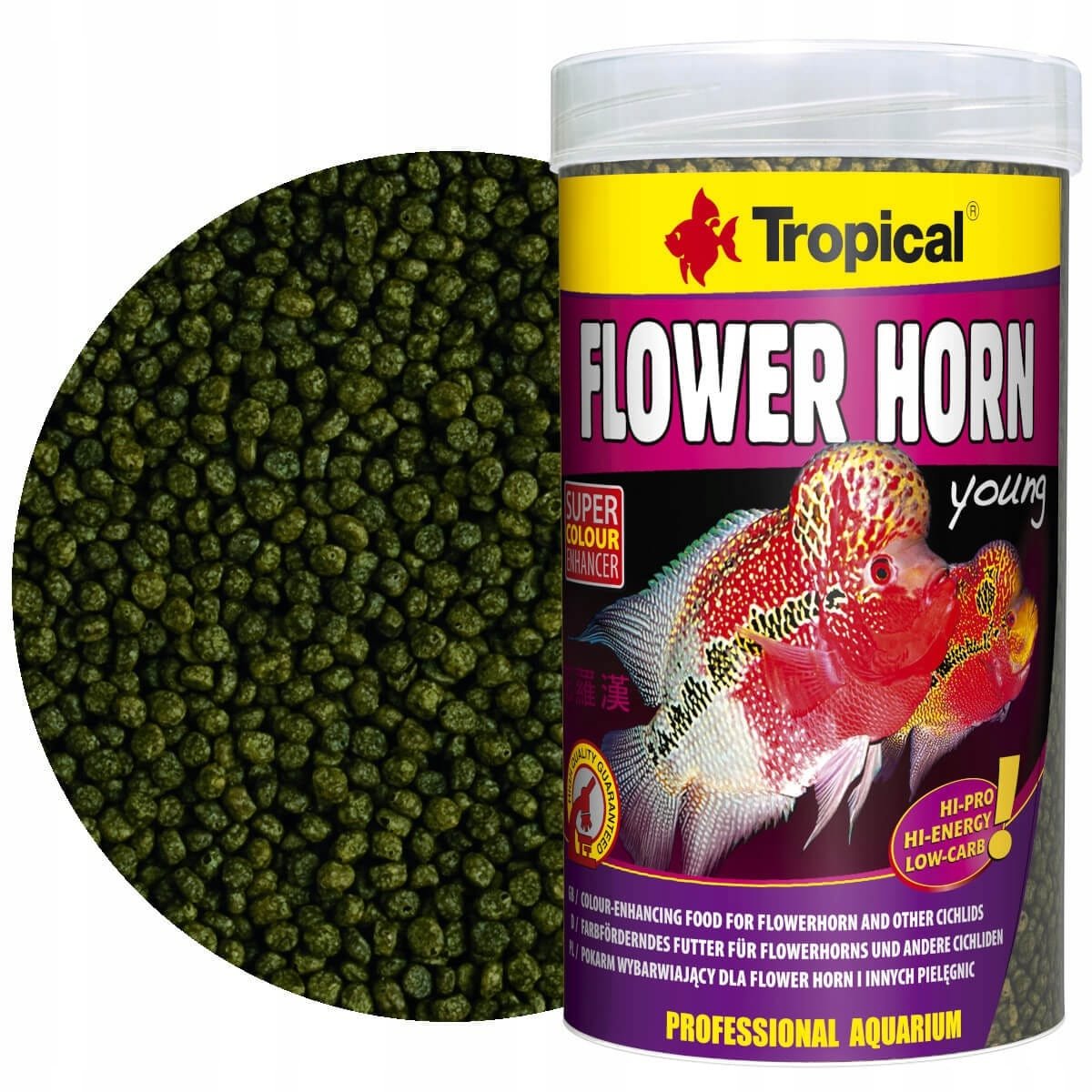
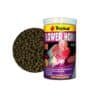
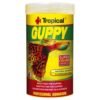
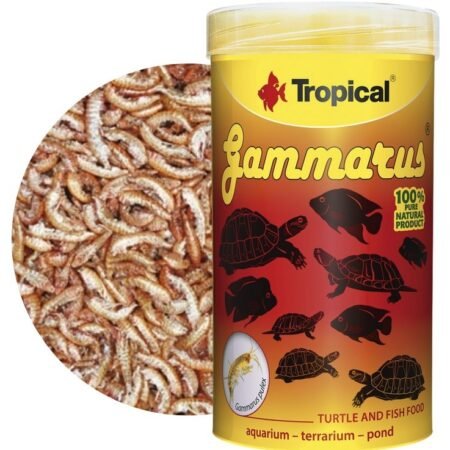
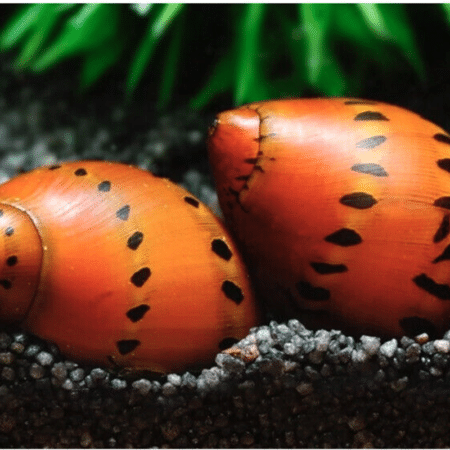
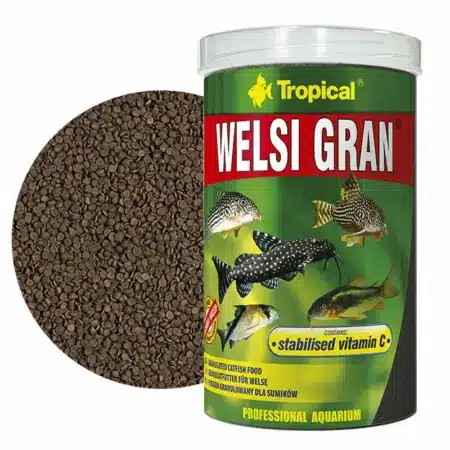
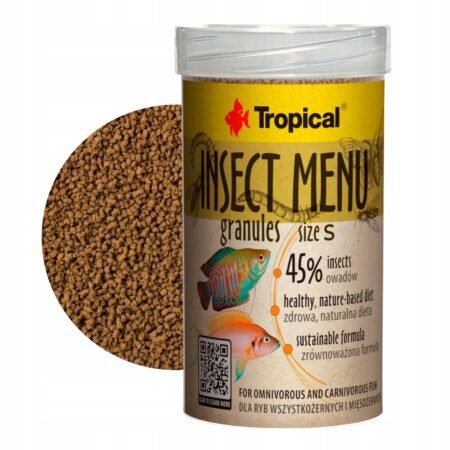

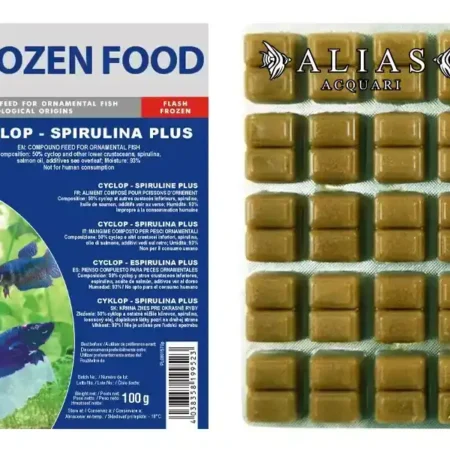
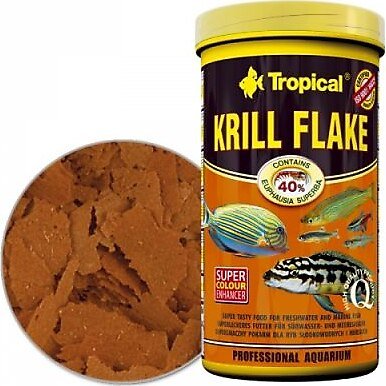
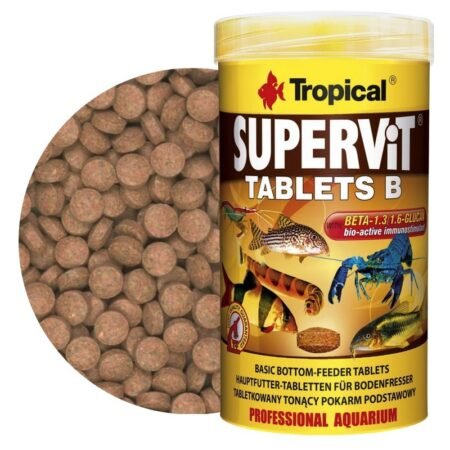
Emily Carter (verified owner) –
As a caring fish parent, I always prioritize the health and happiness of my fish, and I can confidently say that the Flower Horn Young Pellets have made a noticeable difference! After just a couple of weeks of feeding these floating pellets, I’ve seen my flower horn exhibit vibrant colors and increased activity. The inclusion of Omega-3 and Omega-6 fatty acids, along with astaxanthin, seems to have enhanced not just their coloration but also their overall vigor.
Compared to other dry food options I’ve tried, these pellets have proven far superior. My fish not only devour them eagerly, but their digestion also seems much better—no more floating issues!
While the size of the pellets might be slightly larger for smaller fish, my flower horn loves them. If you’ve got larger cichlids or flower horns specifically, I can’t recommend these enough! They’ve transformed my feeding routine into a highlight of my day.
Overall, my experience with these aquarium supplies has been fantastic, and I will definitely be repurchasing. For anyone looking to enhance their fish’s health and happiness, these pellets are a must-try!
Emily Carter (verified owner) –
As a passionate fish parent, I’m always on the lookout for high-quality food that benefits my beloved Flower Horn. I recently started using the Flower Horn Young Pellets enriched with astaxanthin, and I couldn’t be happier! After just two weeks of feeding these floating pellets, I’ve already noticed a remarkable enhancement in my fish’s coloration. The vibrant reds and yellows are simply stunning!
Not only does this astaxanthin food provide essential nutrients, but the Omega-3 and Omega-6 fatty acids also promote healthy growth and well-being. I appreciate that it’s designed specifically for Flower Horn fish, unlike some generic options I’ve tried before, which often lack the targeted ingredients.
The pellets float nicely, making it easy for my fish to access their meals without sinking too quickly. I also find that this food doesn’t cloud the water, which is a huge plus for maintaining a clean tank.
If you’re a fellow aquarium enthusiast looking to bring out the best colors in your Flower Horn, I highly recommend these pellets. They’re definitely worth the investment for the health and happiness of your fish!